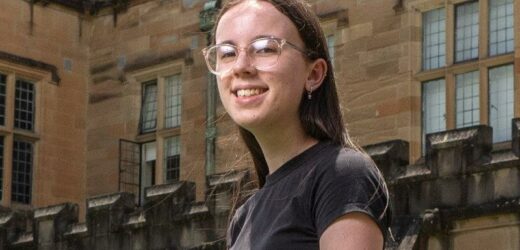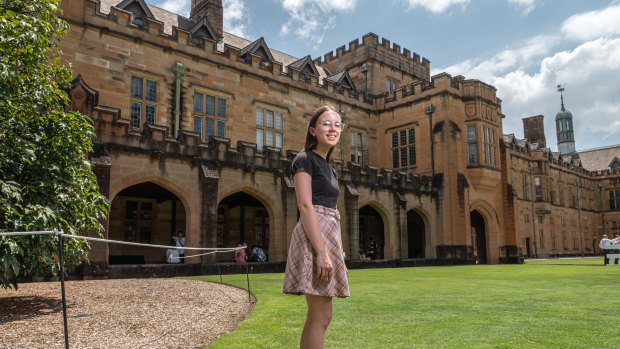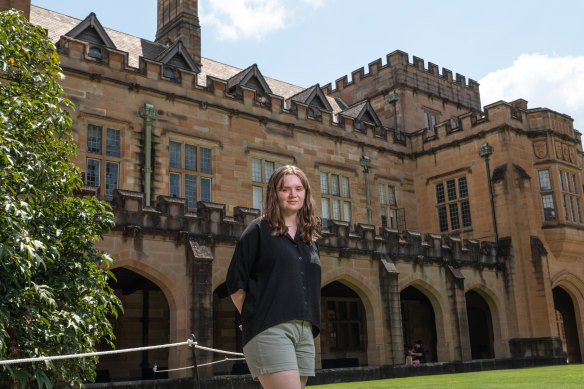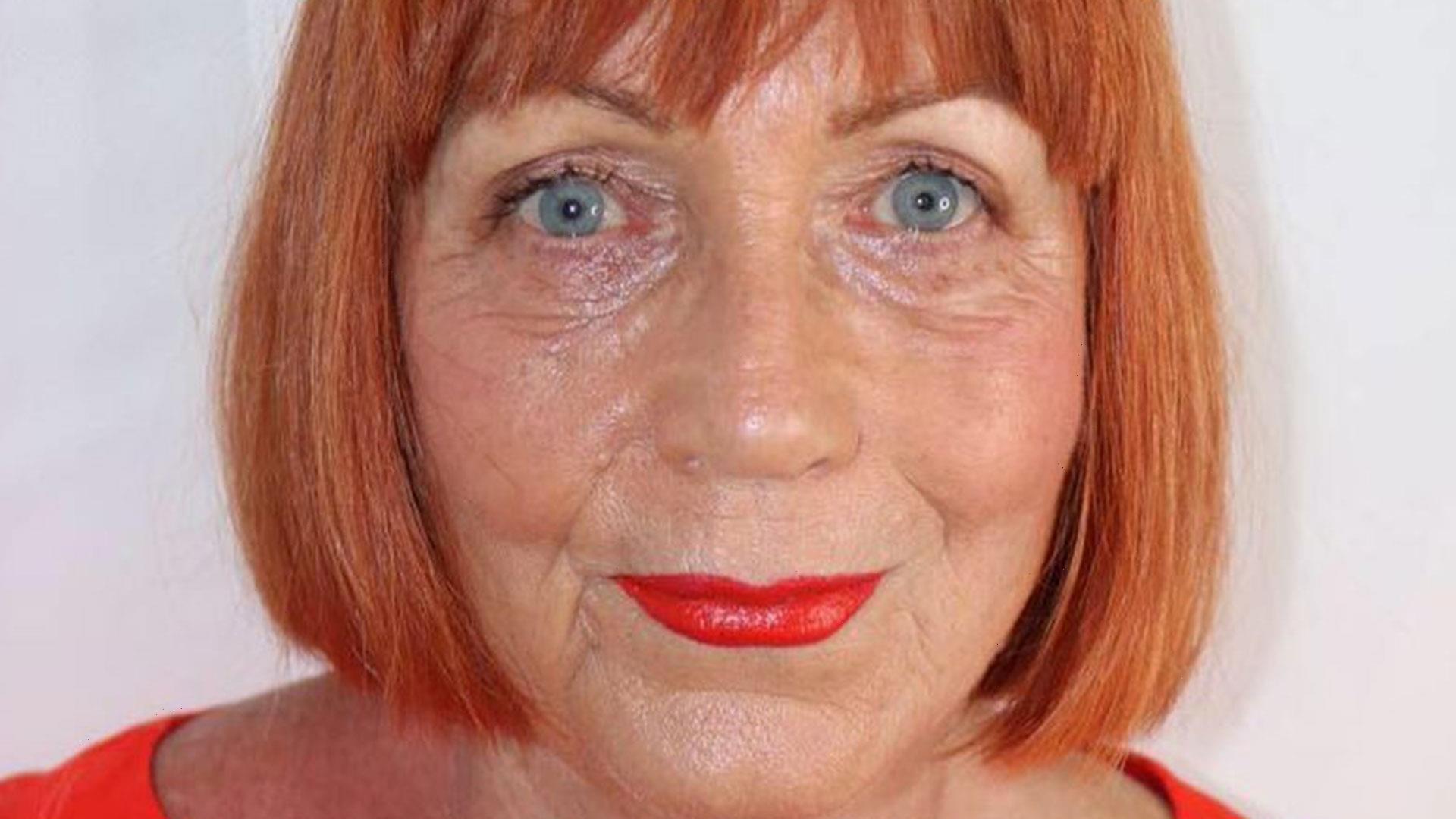When Cameryn Smider starts her undergraduate degree it will take her two hours by train to travel from her tight-knit community on the northern Central Coast to the city’s oldest sandstone university.
But the first-year maths and science student – who has secured a place in her “dream double degree” at Sydney University – is unfazed by the long commute.
Cameryn Smider will commute from the Central Coast to Sydney University when she starts her degree.Credit:Flavio Brancaleone
“I really never thought I’d make it here,” said Smider, who finished her HSC last year at her local public school, Gorokan High, just south of Lake Macquarie.
Smider is one of hundreds of students to score an offer for one of Sydney University’s new scholarship places – worth up to $55,000 over the course of a degree – that have been set aside for students from disadvantaged backgrounds.
“I’m from a small community in Lake Munmorah … and no one I know is going to Sydney Uni. I think I’ll have to use all that time on the train to study on the train, and read my materials,” she said.
As the first in her family to go to university, Smider said she was driven to apply for one of the university’s new scholarships for financial support while she completes a bachelor of science and master of mathematical sciences.
“I think I’m the only one from my school that’s going to Sydney Uni. Coming from a regional public school it’s a bit daunting … but the scholarship really influenced whether I applied to Sydney or Newcastle where some of my friends are going,” she said.
Last year, Sydney University – an institution with a long reputation of taking top academic students from exclusive schools and suburbs – announced it would be increasing opportunities for disadvantaged students with scholarships and subsidised accommodation as part of a new 10-year strategy.
Vice Chancellor Mark Scott said at the time that “the roads into the university are wide and smooth from certain schools and certain suburbs”.
Other higher education institutions, including the University of NSW, have announced similar programs.
Sydney Uni student Tahlia Watson said the scholarship made an “extreme difference”.Credit:Flavio Brancaleone
A spokesperson for Sydney said it had made 1205 undergraduate offers under the MySydney scholarship program so far, making up about 10 per cent of the institution’s Universities Admissions Centre offers. Final enrolments for semester one will be confirmed on March 31.
It is a 26 per cent increase on the number of offers made to low socioeconomic students than last year, the spokesperson said.
The program is open for domestic students who at the time of application are living in the lowest 25 per cent of the Australian Bureau of Statistics’ socioeconomic indexes for areas (SEIFA) measure.
Scott said the scholarship program is “part of a historic moment” for the university.
“We want to be a place in which all of our students – no matter where they come from – truly thrive,” he said.
Andrew Norton, a higher education academic at the Australian National University, said one concern about the new scholarship programs at city universities is that it “may not greatly increase the number of low socioeconomic students that go to university, but just change the universities they go to”.
“There are numerous concerns that it’s simply the Group of Eight universities buying their way to look like they are improving the numbers of lower SES students in their campuses. I would guess that at a state level there will be no major increase in the number of low SES students choosing to go to university,” Norton said.
“But we do have issues with retention and I suspect financial issues are one reason that some students don’t continue studies. If this money can help manage that then it could affect if they finish their degree or not.”
Tahlia Watson, a student from Cessnock who will study a bachelor of arts majoring in archaeology, said the scholarship has made an “extreme difference” to her choosing to study in the city.
In addition to the scholarship – of about $8500 each year – the university will cover the cost for her to live at Queen Mary student accommodation.
“This was the course I really wanted, but I was very stressed about my financial situation,” she said. “This helps.”
The Morning Edition newsletter is our guide to the day’s most important and interesting stories, analysis and insights. Sign up here.
Most Viewed in National
From our partners
Source: Read Full Article




